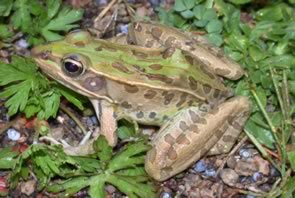
Rana sphenocephala
Photo by JD Willson
Description: The southern leopard frog is a slender, beautifully spotted frog that may be bright green, brown, tan, gold or bronze with scattered, well-defined dark brown spots. It has prominent ridges running along each side, long hind legs, a pointed head and a plain white belly. The southern leopard frog may be distinguished from the closely related pickerel frog by more rounded and more randomly placed spots, a small white dot in the center of the tympanum (external eardrum), and lack of yellow or orange on the concealed surfaces of the hind legs.
Habitats and Habits: Leopard frogs are abundant throughout most of the Coastal Plain and portions of the Piedmont. In parts of the Coastal Plain, they may be the most common frogs found. They inhabit a variety of wetlands and waterways but breed most successfully in fishless temporary ponds. Eggs are deposited in large, slightly flattened masses, often in very shallow water. Many egg masses may be deposited in a small area. Eggs hatch in a week or two. Tadpoles usually take 12 weeks or more to transform and may be found at any time of year. The tadpoles are variable but can often be distinguished from those of bullfrogs, green frogs and carpenter frogs in part by their translucent bellies, through which the intestinal coil is usually visible.
Call: Most breeding takes place in late winter and early spring, but southern leopard frogs are opportunistic breeders, sometimes breeding in the fall or other times of the year. Their croaking, chuckling call has been compared to the sound of rubbing an inflated balloon.
Frog Fact: Powerful, agile leapers, southern leopard frogs spend much of their time on land and may flee away from water rather than toward it.
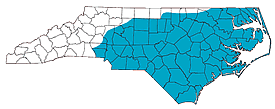
The shaded region represents the range of the southern leopard frog in North Carolina.
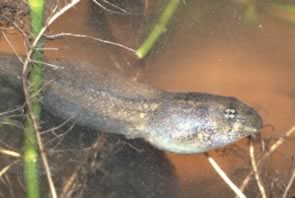
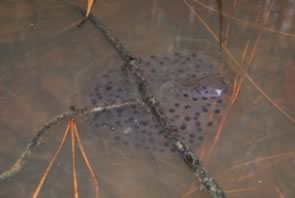
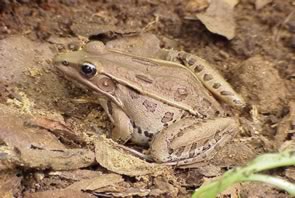
Photo by JD Willson
An egg mass of the southern leopard frog.
Photo
by JD Willson
Photo by JD Willson
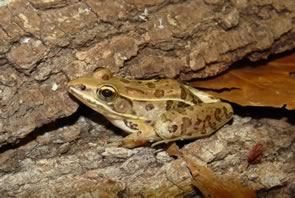
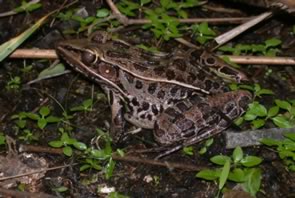
This website created by: Grant Connette and Evan Eskew.
For comments or questions contact M. Dorcas: midorcas@davidson.edu.
M. Dorcas homepage: http://bio.davidson.edu/dorcas
Davidson College, Davidson, North Carolina 28035-1719.
Text and maps from: Dorcas, M. E., S. J. Price, J. C Beane, and S. S. Cross. 2007. The Frogs and Toads of North Carolina. North Carolina Wildlife Resources Commission, Raleigh, NC. – Copyright by Michael E. Dorcas
Call provided by Dave Ross.
Partial Funding for this website provided by a Associate Colleges of the South, National Science Foundation, and Duke Energy.
